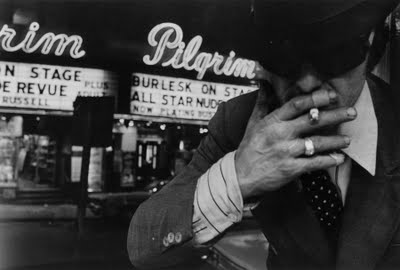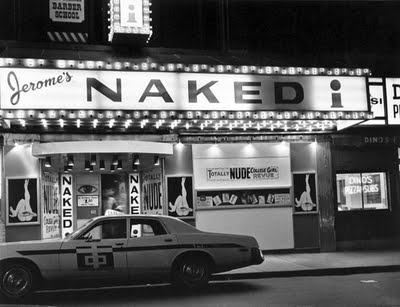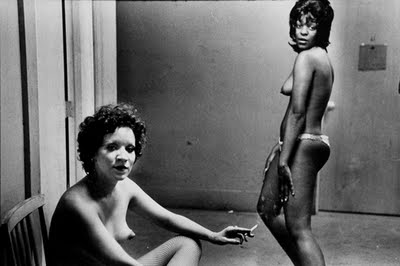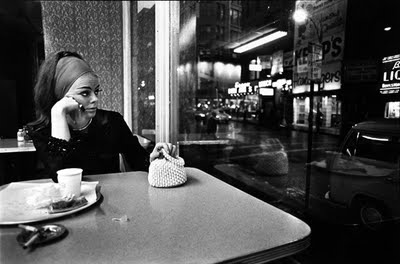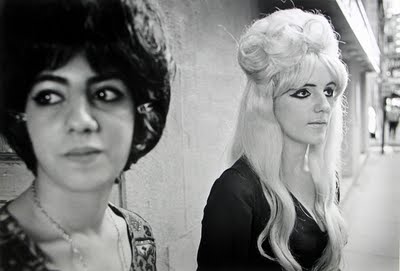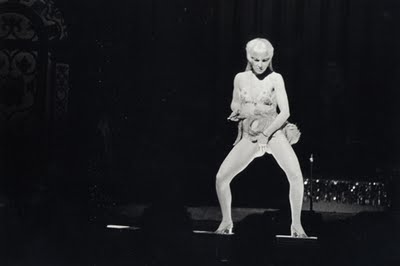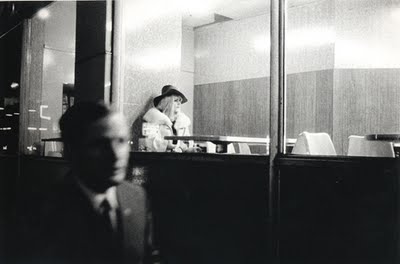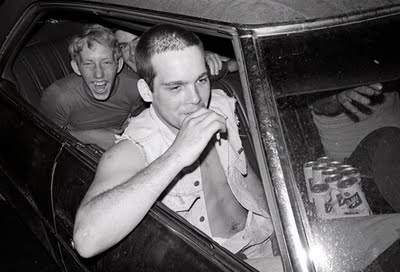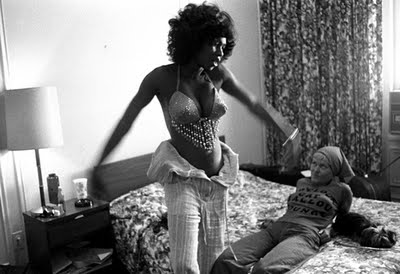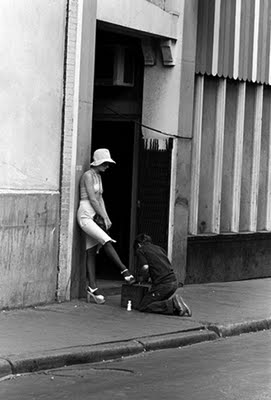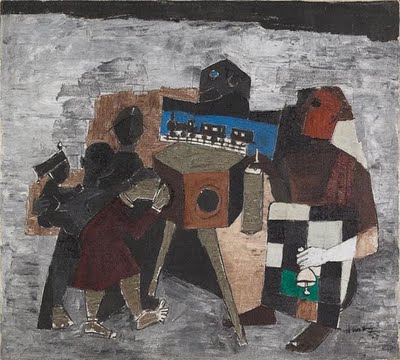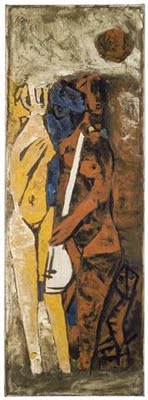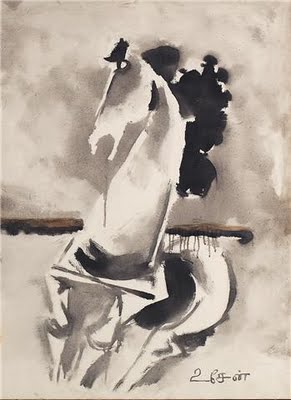“Boston Combat Zone: 1969–1978” at Yezerski
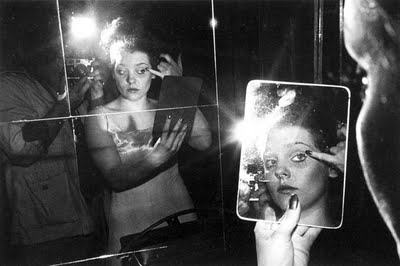
From our review of “Boston Combat Zone: 1969–1978,” featuring photos by Roswell Angier of Cambridge, Jerry Berndt of Paris, and John Goodman of Wellesley, Massachusetts, at Howard Yezerski Gallery:
Everyone looks so weary in Howard Yezerski Gallery's gritty documentary photos of Boston's dear departed Combat Zone from 1969 to 1978. The year's still young, but this glimpse into our past from Roswell Angier, Jerry Berndt, and John Goodman may be one of the best shows of 2010.Read the rest here.
The stretch of Washington Street between Stuart Street and Downtown Crossing got its name from rowdy Navy sailors who prowled its bars in the 1950s. But it had become a haven for adult bookstores, clubs, and moviehouses by the early '70s, when, as a way to quarantine legal sexcapades, city zoning officials designated it Boston's official "adult-entertainment district."
Cambridge photographer Angier worked his way into strip-club back rooms with the help of the joints' PR folks. Elizabeth Harris — a guy who'd had a number of operations to become a woman — bares all as she slithers around a pole at the Two O'Clock Club. Lorraine Gail sits exhausted backstage in her satin and rhinestones robe. Then she raises her arms and shows off her naked breasts, but her eyes are empty. Angier reports that an ex-boyfriend later beat her to death with a crowbar in a park.
One of the strippers to whom he got closest was Coty Lee. She looks into a hand-held mirror as she fixes her make-up. Angier stands over her shoulder in the dark — a kind of metaphor for all the watching men. You can see his camera, but his face is obscured by the flash.
“Boston Combat Zone: 1969–1978,” Howard Yezerski Gallery, 460 Harrison Ave., Boston, Feb. 12 to March 16, 2010.
Pictured from top to bottom:
Roswell Angier, "Coty Lee, Mousetrap Cabaret," 1975, "Sonny, Washington Street," 1974, "Washington Street," 1977, "Chorus Girls, Pilgrim Theater," 1973, "Jeri Dean, Two O'Clock Club," 1974; Jerry Berndt, "The Combat Zone, Washington St., Boston," 1968, "The Combat Zone, Washington St., Boston," 1968, "The Combat Zone, Washington St., Boston," c. 1967, "The Combat Zone, Washington St., Boston," 1968; John Goodman, "Tremont Street #4," 1978, "The Schlitz Boys," 1978, "Onyx, Bradford Hotel, 13th Floor," 1975, "Sweet Polly," May 20, 1976, "Shine, La Grange Street," 1975.
